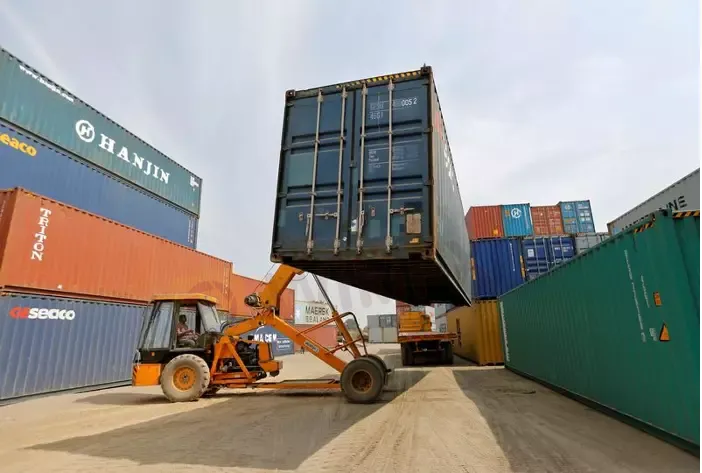简体中文
繁體中文
English
Pусский
日本語
ภาษาไทย
Tiếng Việt
Bahasa Indonesia
Español
हिन्दी
Filippiiniläinen
Français
Deutsch
Português
Türkçe
한국어
العربية
India’s trade deficit to remain above $20 billion – Barclays
Abstract:India’s trade deficit is likely to remain above $20 billion for an extended period, posing the risk of a wider current account deficit, Barclays said.

“While we still expect the trade deficit to hit US$265 billion, the risks are skewed towards an even larger deficit, which poses risks to our forecast for the current account deficit to widen from the present $115 billion for FY22-23,” Rahul Bajoria, chief India economist at Barclays said in a note.
Indias July trade deficit widened to record high of $31.02 billion, up from $10.63 billion a year earlier and higher than $25.64 billion in June, data showed.
Barclays also pointed to how the Reserve Bank of India, having spent more than $60 billion to defend the rupee, has reduced the import cover from currency reserves.
“When sentiment turns, we think the RBIs reserves are likely to recover, meaning heavy intervention on the other side and limited scope for swift rupee appreciation,” the economist said.
Barclays expects the RBI to hike repo rate by 35 basis points on Aug. 5, and follow that up with two more rate hikes of 25 basis points each in September and December, taking the repo rate to 5.75%.

Disclaimer:
The views in this article only represent the author's personal views, and do not constitute investment advice on this platform. This platform does not guarantee the accuracy, completeness and timeliness of the information in the article, and will not be liable for any loss caused by the use of or reliance on the information in the article.
Read more

Italian Regulator Warns Against 5 Websites
The Italian regulator, CONSOB has issued a warning against five websites offering unauthorized financial services. This regulatory action aims to protect the public from fraudulent activities.

WikiEXPO Dubai 2024 is coming soon
3 Days Left!

Trader Exposes Unethical Practices by STP Trading
A recent allegation against STP Trading has cast doubt on the firm's business practices, highlighting the potential risks faced by retail traders in an increasingly crowded and competitive market.

What Makes Cross-Border Payments Easier Than Ever?
Cross-border payments are now faster, cheaper, and simpler! Explore fintech, blockchain, and smart solutions to overcome costs, delays, and global payment hurdles.
WikiFX Broker
Latest News
Hackers Charged for $11M Crypto Theft Using SIM-Swaps
Role of Central Banks in the FX Market
FCA Alerts Against Sydney FX
What Makes Cross-Border Payments Easier Than Ever?
Trader Exposes Unethical Practices by STP Trading
Bitcoin Nears $100,000: A Triumph of Optimism or a Warning Sign?
Malaysian Man Loses RM113,000 in Foreign Currency Investment Scam
Mastercard Partners with JPMorgan for B2B Cross-Border Payments
FCA Identifies Clone Firm Exploiting Admiral Markets' Credibility
Coinbase Under Scrutiny Amid Wrapped Bitcoin Delisting Controversy
Currency Calculator


